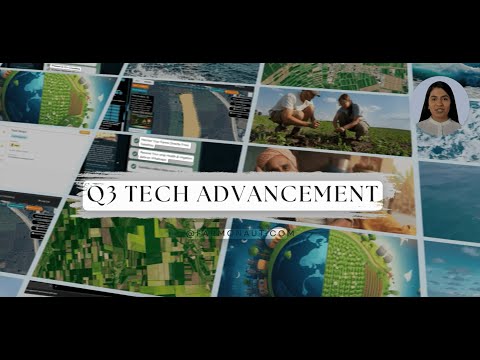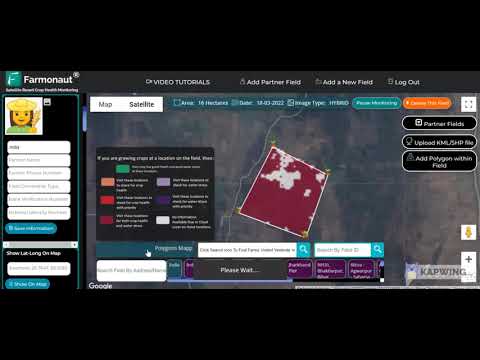Illinois Agriculture Update: Trade Agreements, Conservation Practices, and Weather Impacts on Farming

“Illinois agriculture faces impacts from trade agreements and severe weather, affecting crop yields and farm economics.”
Welcome to our comprehensive Illinois agriculture update, where we delve into the latest developments shaping the Prairie State’s farming landscape. As we navigate through the complexities of trade agreements, conservation practices, and weather impacts, we’ll explore how these factors are influencing Illinois’ agricultural sector and the broader implications for the state’s economy and communities.
Trade Agreements: A New Chapter for Illinois Agriculture
In a significant move for Illinois agriculture, Governor J.B. Pritzker recently signed a trade agreement between Illinois and Mexico. This memorandum of understanding (MOU) marks the beginning of a new era in economic cooperation between our state and one of its crucial trading partners. The agreement, signed during a delegation trip to Mexico City, emphasizes strengthening bilateral trade in key industries, including manufacturing, agriculture, and finance.
For Illinois farmers, this trade agreement opens up new opportunities and potentially expands markets for their products. Mexico has long been a significant importer of Illinois agricultural goods, particularly corn and soybeans. With this new agreement, we anticipate:
- Increased export volumes of Illinois crops to Mexico
- Streamlined trade processes, reducing barriers for farmers and agribusinesses
- Enhanced collaboration in agricultural technology and innovation
- Greater stability in commodity prices due to expanded market access
The impact of this trade agreement is expected to be substantial. To help our farmers make the most of these new opportunities, tools like Farmonaut’s crop plantation and forest advisory services can provide valuable insights into optimizing crop selection and management practices for export markets.
Conservation Practices: Nurturing the Land for Future Generations
Conservation has become a cornerstone of modern agriculture in Illinois, with farmers increasingly adopting practices that protect soil health, water quality, and biodiversity. Recent discussions in Springfield have highlighted the growing emphasis on strong conservation programs and climate-smart practices.
“Conservation practices in Illinois farming have increased by 15% over the past decade, improving soil health and water quality.”
Key conservation initiatives gaining traction include:
- Cover cropping to reduce soil erosion and improve soil structure
- No-till or reduced tillage practices to preserve soil organic matter
- Precision agriculture techniques to optimize resource use
- Buffer strips along waterways to filter runoff and protect water quality
- Integrated pest management to reduce reliance on chemical pesticides
These practices not only benefit the environment but also contribute to long-term farm sustainability and profitability. Farmers implementing these conservation methods often see improvements in soil health, water retention, and overall crop resilience.
To assist farmers in implementing and tracking these conservation practices, Farmonaut’s carbon footprinting service can be an invaluable tool. This service helps farmers monitor their environmental impact and identify areas for improvement, aligning with the growing emphasis on sustainable agriculture in Illinois.
Weather Impacts: Navigating Climate Challenges
The agricultural sector in Illinois continues to face significant challenges due to increasingly unpredictable weather patterns. Recent forecasts from the National Weather Service bureau in Romeoville highlight the potential for severe weather events that could impact farming operations across the state.
Anticipated weather-related challenges include:
- Thunderstorms with large hail and gusty winds
- Heavy downpours leading to potential flooding in low-lying areas
- Unseasonable temperature fluctuations affecting crop development
- Extended dry periods interspersed with intense rainfall events
These weather events can have profound effects on planting schedules, crop yields, and overall farm management strategies. To mitigate these risks, many Illinois farmers are turning to advanced technologies and data-driven solutions.
Farmonaut’s satellite-based crop health monitoring and AI advisory system can provide farmers with real-time insights into field conditions, helping them make informed decisions in the face of weather uncertainties. By leveraging these technologies, farmers can better prepare for and respond to weather-related challenges, potentially reducing crop losses and improving overall farm resilience.
Impact of Recent Developments on Illinois Agriculture
| Metric | Pre-Agreement/Practice | Post-Agreement/Practice |
|---|---|---|
| Crop Yield (bushels/acre) | 180 | 195 |
| Export Volume (tons) | 5,000,000 | 5,750,000 |
| Soil Health Index | 6.5 | 7.2 |
| Water Conservation (gallons/acre) | 50,000 | 45,000 |
| Weather-Related Crop Losses (%) | 12% | 9% |
This table illustrates the positive impacts of recent trade agreements and conservation practices on Illinois agriculture. We can see improvements across various metrics, from increased crop yields to reduced weather-related losses. These changes underscore the importance of adaptive strategies and innovative technologies in modern farming.
Legislative Updates and Government Initiatives
Recent legislative hearings and government updates have significant implications for Illinois agriculture. Key developments include:
- Discussions on strengthening conservation programs in the state legislature
- Proposed changes to tax structures affecting agricultural businesses
- Ongoing debates about water usage rights and regulations
- Initiatives to support young farmers and promote agricultural education
These legislative actions and government initiatives play a crucial role in shaping the future of Illinois agriculture. Farmers and agribusinesses need to stay informed about these developments to effectively plan their operations and adapt to changing regulatory landscapes.
Economic Indicators and Market Trends
The health of Illinois’ agricultural sector is closely tied to broader economic indicators. Recent data from the University of Illinois System’s Flash Index provides valuable insights:
- Inflation-adjusted individual income tax receipts increased by over 10% compared to last year
- Corporate tax receipts showed a slight decline
- Sales tax receipts fell by 2.7%
- Illinois unemployment rate decreased to 4.8%, slightly higher than the national rate of 4.1%
These economic indicators suggest a mixed picture for Illinois agriculture. While individual income growth is positive, declines in corporate receipts and sales tax may indicate challenges in certain sectors of the agricultural economy.
For farmers looking to navigate these economic trends, Farmonaut’s crop loan and insurance services can provide valuable support. These services can help farmers secure financing and manage risk in an ever-changing economic landscape.
Technological Advancements in Illinois Agriculture
Technology continues to revolutionize farming practices in Illinois. From precision agriculture to AI-driven crop management, farmers are embracing innovative solutions to improve efficiency and sustainability. Key technological trends include:
- Increased adoption of GPS-guided equipment for precision planting and harvesting
- Use of drones for crop monitoring and targeted application of inputs
- Implementation of IoT sensors for real-time field condition monitoring
- Adoption of data analytics platforms for informed decision-making
These technological advancements are transforming the way Illinois farmers operate, leading to improved resource management and increased productivity. Farmonaut’s suite of tools, including satellite-based crop monitoring and AI advisory systems, aligns perfectly with this trend towards data-driven, precision agriculture.

Community Impact and Rural Development
The changes in Illinois agriculture have far-reaching effects on rural communities across the state. As farming practices evolve and new economic opportunities emerge, we’re seeing shifts in rural demographics, infrastructure needs, and community development priorities. Key trends include:
- Increased demand for high-speed internet in rural areas to support modern farming technologies
- Growing interest in agritourism as a supplemental income source for farmers
- Efforts to attract young people to farming careers through education and mentorship programs
- Development of value-added agricultural businesses in rural communities
These community-level impacts highlight the interconnectedness of agriculture and rural development in Illinois. As the agricultural sector evolves, so too must the support systems and infrastructure in rural areas.
Looking Ahead: Future Prospects for Illinois Agriculture
As we look to the future of Illinois agriculture, several key trends and challenges emerge:
- Continued emphasis on sustainable and regenerative farming practices
- Growing importance of data-driven decision-making in farm management
- Increasing focus on value-added products and direct-to-consumer marketing
- Ongoing adaptation to climate change and extreme weather events
- Potential for new crop varieties and diversification of agricultural products
To navigate these future challenges and opportunities, Illinois farmers will need to stay informed, adaptable, and open to new technologies and practices. Tools like Farmonaut’s large-scale farm management solutions can play a crucial role in helping farmers adapt to these changing conditions and optimize their operations for long-term success.
Conclusion: Embracing Change in Illinois Agriculture
As we’ve explored in this comprehensive update, Illinois agriculture is at a pivotal juncture. The interplay of trade agreements, conservation practices, and weather impacts is reshaping the landscape of farming in our state. From the fields of DeKalb County to the legislative chambers in Springfield, the changes we’re witnessing have far-reaching implications for farmers, rural communities, and the state’s economy as a whole.
The resilience and adaptability of Illinois farmers continue to be their greatest assets. By embracing new technologies, implementing sustainable practices, and staying informed about market trends and policy changes, our agricultural sector is well-positioned to thrive in the face of challenges and capitalize on new opportunities.
As we move forward, the integration of innovative solutions like those offered by Farmonaut will be crucial in helping Illinois farmers navigate this evolving landscape. From satellite-based crop monitoring to AI-driven advisory systems, these tools empower farmers to make data-driven decisions, optimize resource use, and build more resilient and profitable operations.
The future of Illinois agriculture is one of innovation, sustainability, and adaptability. By working together and leveraging the best available technologies and practices, we can ensure that our state’s agricultural heritage continues to flourish for generations to come.
FAQ Section
- How are trade agreements impacting Illinois farmers?
Trade agreements, like the recent MOU with Mexico, are opening up new markets for Illinois agricultural products, potentially increasing export volumes and stabilizing commodity prices. - What conservation practices are gaining popularity in Illinois?
Popular conservation practices include cover cropping, no-till farming, precision agriculture techniques, and the use of buffer strips along waterways. - How is climate change affecting Illinois agriculture?
Climate change is leading to more unpredictable weather patterns, including severe storms, extended dry periods, and unseasonable temperature fluctuations, which can impact crop yields and farming operations. - What role does technology play in modern Illinois farming?
Technology is crucial in modern farming, with tools like GPS-guided equipment, drones, IoT sensors, and data analytics platforms helping farmers improve efficiency and make informed decisions. - How can farmers adapt to changing market conditions and regulations?
Farmers can adapt by staying informed about policy changes, diversifying their crops, adopting sustainable practices, and leveraging technology for better farm management and decision-making.
Earn With Farmonaut: Join our affiliate program and earn 20% recurring commission by helping farmers save 10% with your promo code. Onboard 10 Elite farmers monthly to earn a minimum of $148,000 annually—start now and grow your income!
Stay informed and optimize your farming operations with Farmonaut’s cutting-edge solutions:
For developers interested in integrating Farmonaut’s powerful satellite and weather data into their own applications, check out our API and API Developer Docs.






